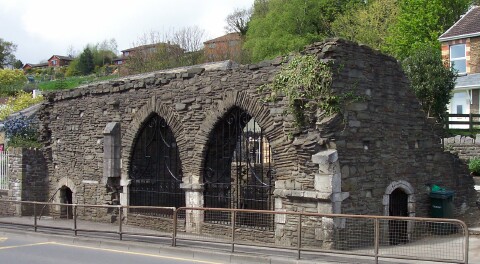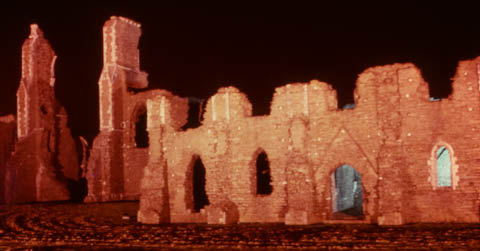For its size - only some 2.7 square miles - this former parish of Dyffryn Clydach is packed with history, both social and industrial. So, coming from Neath town, let us go on a circular tour of the Community.
We will start in the Neath Abbey grange of Cwrt Herbert at a point opposite the grassy traffic roundabout known locally as the "Cwrt Herbert" roundabout. Here, at a site now occupied by a small wood and a cement works, the local historian, the late George Eaton, believed he had discovered a wooden motte and bailey Norman castle. Documentary evidence of this is contained in the Charter of Neath Abbey which says, "The Abbey was built on the site where Sir Richard Grenville's castle once stood". Remains of a man-made mound can still be seen there and the Commission for Ancient Monuments has confirmed that all the evidence points to this mound being the site of the "old castle", built probably between 1090 and about 1095 (so it pre-dated the Grenville castle built in Neath town later).
On the opposite side of the main road behind the pond at the entrance to the Cwrt Herbert estate, we come to a six-foot high standing burial stone of a monk. It is known as the Monk's Stone and has a large cross incised on it. He may have worked at the Abbey's sheep folds on the Cwrt Herbert grange. In the early 19th Century Cwrt Herbert mansion, which once stood here, was associated with the famous Captain Rees Gronw, a Guards' officer at the battle of Waterloo, M.P., gambler, and dandy, who as a boy escorted the poet Robert Southey on an unsuccessful house-hunting excursion up the Vale of Neath.
Let us next proceed the short distance along the main Swansea road towards the Hope and Anchor pub. Here we will see the ruins of what remains of Neath Abbey's main entrance - a gatehouse.
We have to cross the road and walk past today's industrial buildings to reach the extensive ruins of what was once great Neath Abbey. We will see that centrally placed within the precinct were the main Abbey buildings - the convent, the church and three ranges around an inner court or cloister. Low hills shelter this site on the south and east from the onshore winds of Swansea Bay, with the River Nedd less than a mile away. It stands, too, in the lee of Mynydd Drumau to the north-west. The swift-flowing little river Clydach still bounds the site on the east, and leats from this stream used to provide the Abbey with fishing, a water supply and drainage. On its open site, therefore, the Abbey could follow the normal Cistercian pattern. Its monks were known as the White Monks.

The Abbey's church, whose impressive outer walls still stand to a considerable height today, was a large, cruciform building with a square-ended, eastern arm of four bays and with transepts to the north and south, each with two chapels and a long, aisled nave of seven bays. The Abbey was erected, in the Early Decorated style, in one building operation between 1280 and 1330, the first and earlier abbey having probably been nearer the River Nedd at Cwrt-y-Bettws. In the year 1129 the Norman Richard de Granville obtained permission from his superior lord of Glamorgan, Robert, the "Consul" or Earl of Gloucester, to grant to the Abbey of the Holy Trinity at Savigny in Normandy the land bounded by the rivers Nedd, Clydach, Tawe and the brook Pwll Cynan, in total 8000 acres (including the present parishes of Coedffranc and Dyffryn Clydach). Savigny accordingly sent an abbot and twelve monks to found an abbey here at Neath on 25th October 1130, and this abbey, dedicated to St. Mary, was named after the river Nedd (or Neath), the sparkling stream.